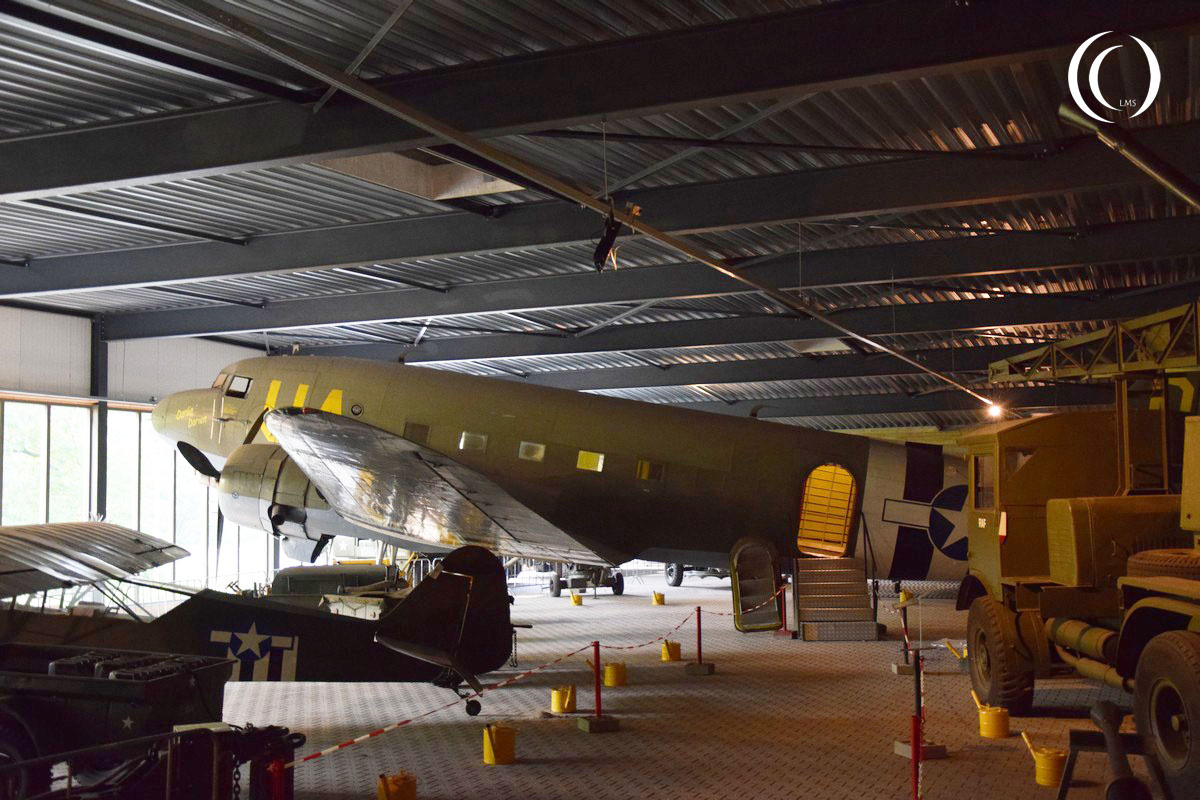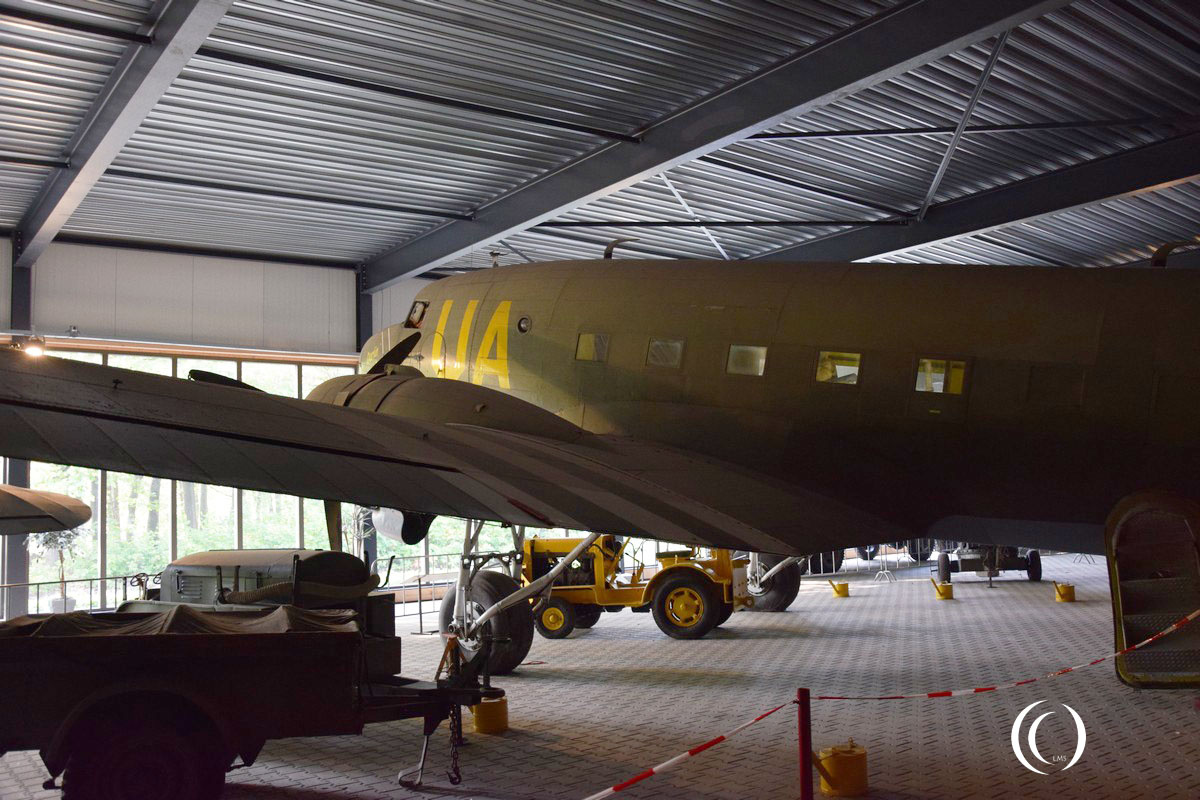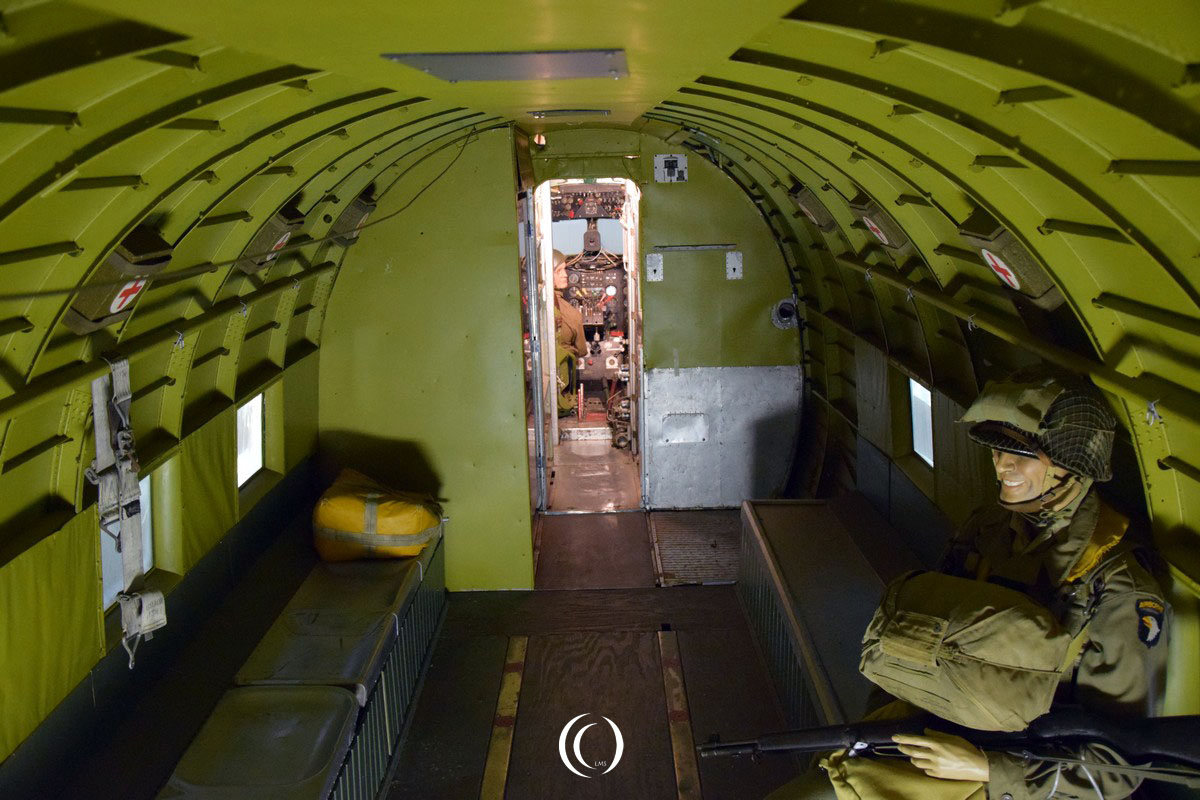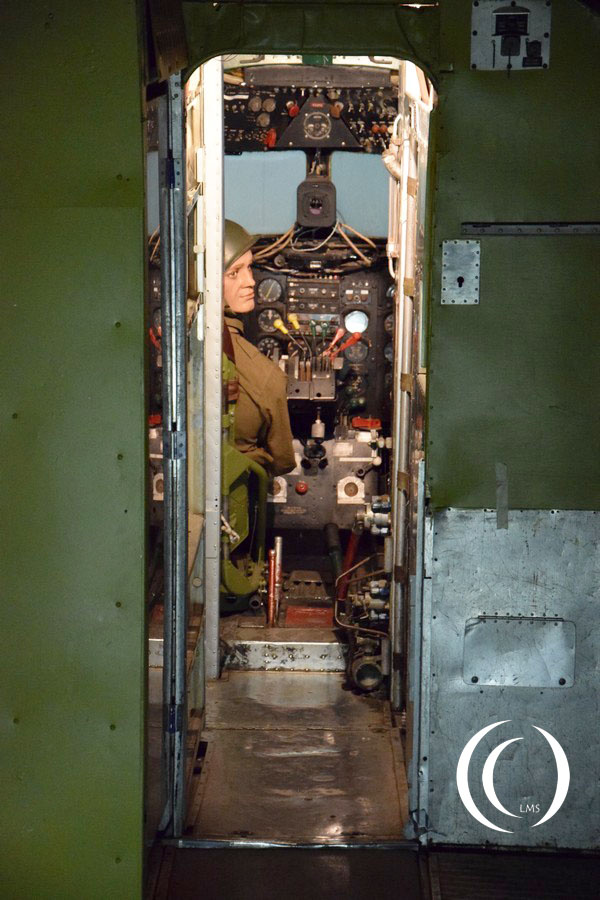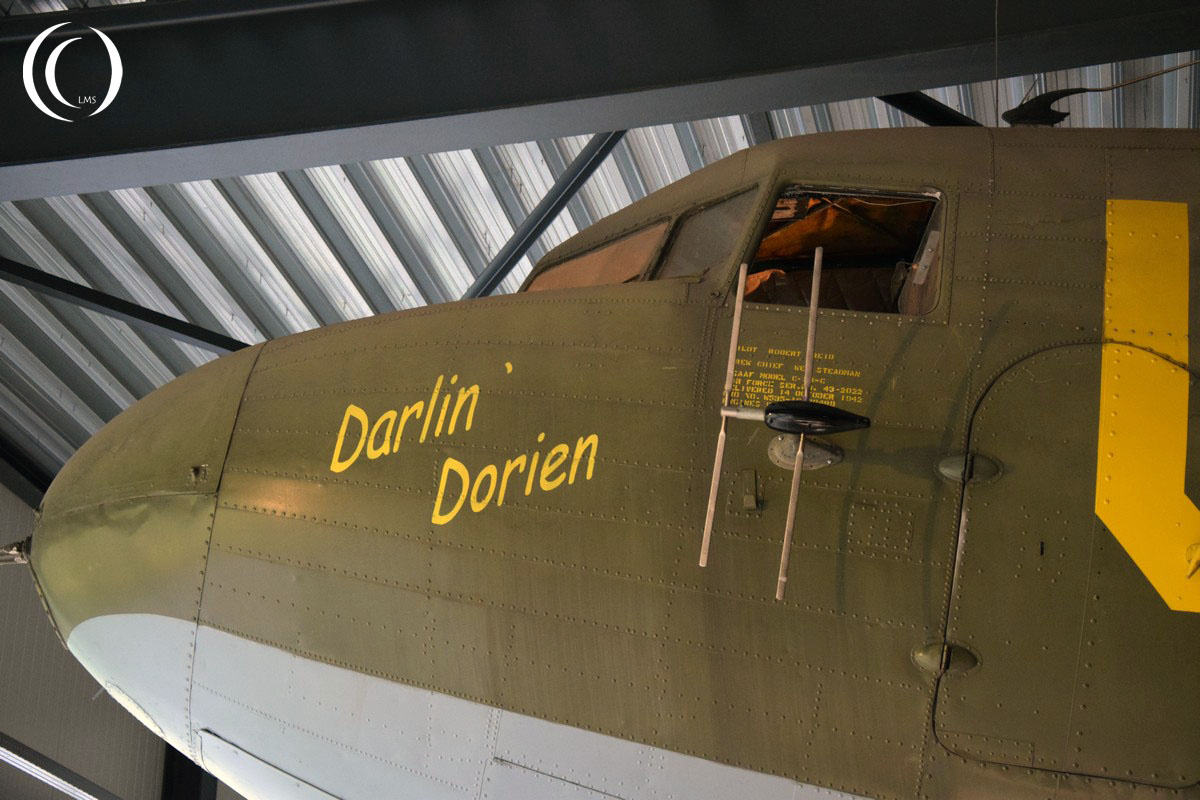This Troop Transport version of the Douglas C-47 Skytrain lacked the reinforced cargo floor, the large cargo door, and hoist attachment. It was dedicated for the troop transport role and could carry 28 passengers in fixed metal seats arranged in rows in the former cargo space. This specialized troop variant was used in vast numbers in Europe. They towed gliders towards the drop zones and carried paratroopers at the same time. In the Pacific they transported soldiers from and to the United States.
The specialized Douglas C-53 Skytrooper was built 221 times, the “C” version; C-53C Skytrooper, with larger access to the port-side was built 17 times.

Douglas C-53 Skytrooper
The Douglas C-53 Skytrooper was a military transport aircraft developed during World War II, based on the civilian DC-3 airliner. The C-53 variant was specifically designed to meet the needs of the U.S. Army Air Forces for troop and cargo transport operations, particularly for airborne and tactical missions. It played a key role in the success of airborne operations, such as the D-Day invasion and subsequent operations in Europe and the Pacific.
The C-53 was powered by two Pratt & Whitney R-1830 Twin Wasp radial engines, each producing 1,200 horsepower, which enabled the aircraft to reach a top speed of around 290 mph (466 km/h) and a range of about 1,500 miles (2,400 km). The aircraft had a wingspan of 95 feet, a length of 64 feet, and a height of 17 feet, with a gross weight of approximately 25,000 pounds.
Its cabin could hold up to 28 fully-equipped soldiers or approximately 6,000 pounds of cargo. The C-53 could also be configured to carry heavy equipment, including jeeps or artillery pieces. The aircraft was equipped with large cargo doors and a tailwheel design, making loading and unloading easier in the field.
The Douglas C-53 Skytrooper was widely used by the U.S. and allied forces for both transport and logistical missions during World War II, proving to be a versatile and reliable workhorse in a variety of combat environments.
